-
Posts
59 -
Joined
-
Last visited
Content Type
Profiles
Forums
Articles
Posts posted by Davide Roveri
-
-
Potentially the system in Lumix cameras is even better than what Fuji is offering since it can be based on LUTs if you want and therefore you can create very customised simulations.. The only limitation at the moment is that the grain effect (which is very nicely implemented and you can read more about it here) is only available in the L.Neo and L.Monochrome profiles which are very stylised already so unless you base your own profile on those you won't be able to add the grain but let's hope this will change in future firmware releases 🤞
-
2 hours ago, Mark Romero 2 said:
Did you shoot in V-LOG?
Hi Mark, I did! All shot in V-LOG at base ISO 640 overexposed by 2 stops for most of the shots.
-
9 minutes ago, kye said:
Nice compositions.
What lenses did you use?
Cheers mate! 😊
90% of the shots is the Lumix S 50 1.8 and I've used the 20-60 kit lens for the wide angles.
- Mark Romero 2 and kye
-
 2
2
-
Hello everyone,
just wanted to share a little travel film I shot in Valencia on my first trip with the S5IIX, hope you're gonna enjoy!
- Mark Romero 2, ac6000cw and kye
-
 2
2
-
 1
1
-
The body layout is from the previous generation of cameras so it can either be an a7 III or a7r III (the only different thing would be the badge on the top left hand side of tha camera which is unfortunately covered in the shot). The lens is 100% a Sony G FE 90mm f2.8 Macro, you can tell by the big focus ring with clutch mechanism and the double distance scale in different colours (you can just about see the red marking is feet above the white one in meters) 😊
- TheRenaissanceMan and kye
-
 2
2
-
12 hours ago, kye said:
One option you might test is doing the gyro stabilisation and then the normal stabilisation on top of that. I suspect that Resolve will only let you apply one type of stabilisation, so you'd have to render out a clip with the gyro built in and then import and stabilise that clip in a second pass, although in reality if you wanted the extra stabilisation then you could just do a pass of all the gyro shots in a project and then replace the original clips with those processed ones to edit your final project. I suspect that would take it to gimbal levels of stabilisation, although still not giving the shutter angle support of a real gimbal.
I gave it a go but, as i feared, the results are awful, even worse than perspective stabilisation alone 😅 I think it's just too complex to process some movements and geometries for warping stabilisation algorithms. I haven't tried with the other options to be fair but i don't expect great results either..
-
14 hours ago, newfoundmass said:
Impressive stuff. Even more impressive that they enabled this for all their second generation Pocket cameras. The P4K is what, 3 years old now? Adding that huge of a feature on that old of a camera is pretty awesome.
Absolutely! And this is on top of regular and impressive updates for Resolve which is becoming a phenomenal piece of software (and one you never have to pay updates for once you have a licence, which makes it very unique and absolutely commendable in my opinion)
-
16 minutes ago, FHDcrew said:
So what makes you say it can’t be a gimbal replacement?
Because with a gimbal you can do more extreme movements (like running) and you can shoot with a normal 180º shutter speed. But this is a great feature to have nonetheless! 😊
-
Ok, i did more testing today with a wider lens (10mm so 15ish mm equivalent) and i tried some more complex moves as well..
Few more notes:
-45º shutter angle is pretty much a necessity so all the clips have been recorded with that setting (i tried to introduce some motion blur back in in a couple of clips as well and it might even work, i just need to understand how much of it to use)
- The camera doesn't seem to record any Gyro data if the lens stabilisation is ON (i'm not entirely sure about this but certainly the option to select the Gyro stabilisation doesn't appear inside Resolve on the clips shot with OIS) so you have to remember switching off the lens stabilisation if you plan to use the gyro. I reckon it kind of make sense though because without knowing the data from the lens gyro the result would probably be a bit messy 😅
- I have noticed some strange sharpening artifacts in high details area when a clip has been stabilised using gyro but thankfully it seems to only affect the GUI and not the monitor output nor the final render (I'm on Windows 10)
- The results are overall very good, in shots with simple moves there isn't a great deal of difference between the gyro and the algorithm based stabilisation (the building tilt shot and the cushions shot for istance) but in other shots where there are more complex movements and lots of geometric elements that can (and did) wreak havoc on the traditional stabilisation methods the difference is day and night. I would not suggest this is a gimbal replacement by any means because is not but it's definitely a feature that will enable camera movents that are most probably not possible in any other way when you don't have or want to use a gimbal so it's quite exciting!
ps. on the clips where there is severe warping from the perspective stabilisation i tried to use the clips without OIS as well to see if it would fare any better but it made very little difference, it was unusable anyway.
- newfoundmass, Andrew Reid, Kisaha and 2 others
-
 5
5
-
Made a quick and dirty test today with my BMPCC6K and the new 7.9 software.
First clip is shot on a Canon EF 50mm 1.8 (so no OIS and 75mm equivalent)
Second clip is shot on a Canon EF 24-105 f4 @ 24mm (36mm equivalent)
Overall the new stabilisation works very well especially in situations where the traditional point based stabilisation can create visible warping (i included samples of that as well for comparison)
Things to note:
- The workflow is fantastic and probably the real advantage of this over any other gyro stabilisation solution.. it's just a new option in the stabilisation panel in Resolve, no extra software and rendering needed!
- Like any other gyro stabilisation system nothing can be done to reduce motion blur so, unless you have a miniscule quantity of motion in your shot, you need to shoot with faster shutter speed. I found 45º to work the best (apart from the weird look due to the lack of motion blur, i'm experimenting in dialling that back in afterwards and see how it looks)
- Another potential issue with gyro stabilisation is rolling shutter but, according to blackmagic, it's automatically compensated in the algorithm and it doesn't seem to be a big issue (even if the 6K is not the fastest camera around rolling shutter wise).
Much more experiments needed but i wanted to share with you my first findings, this is a very exciting development!
-
Canon EOS R5C
In: Cameras
11 minutes ago, webrunner5 said:I don't see why you can't have both. There has to be a way to lock the sensor block and not have it move, and just use electronic when you want and vice versa. No doubt they both have their place at times. Trouble is you are always going to loose real estate using electronic stabilization.
This is exactly what I was thinking! I mean.. pretty much every camera that I've ever used equipped with IBIS has a sensor cleaning mode that does just that.. it locks the sensor in a neutral position so you can clean it easily without it moving all over the place. Surely it'll never be as strong as a sensor which is permanently held in place but those magnets are a lot stronger than I thought so I'm wondering why one couldn't shoot with the sensor in that mode.
Of course I'm saying this purely as an end user without any knowledge of the engineering behind it so it's entirely possible there are very good reasons why this can't work 😅
-
54 minutes ago, Andrew Reid said:
I think the sensor can run for around 1 hour in 8K with image processing externally.
Yesterday Gerald Undone was doing some testing on the 4K HQ mode recorded externally on a Ninja and the camera shut down due to overheating around the 1h15 mark so I think that estimate is very realistic 🙂
https://instagram.com/stories/geraldundone/2359898914668645546?igshid=ukiotjsceety
-
10 minutes ago, thephoenix said:
watch the video that is up that i posted
I've seen the video and the high gain situation it's interesting but I'm pretty sure on a static scene it's pretty impossible to have the encoder drop to 2:1 compression. In my tests on static subjects the average datarate i got out of Q0 is never more than 3:1 so around 540Mb/s which is close to the limit of the best CFast cards and SSD but still doable so my question about the lowest compression ratio Q0 is capable of still stands.. Probably the camera will never go lower than that in 50fps otherwise dropped frames are inevitable...
-
44 minutes ago, thephoenix said:
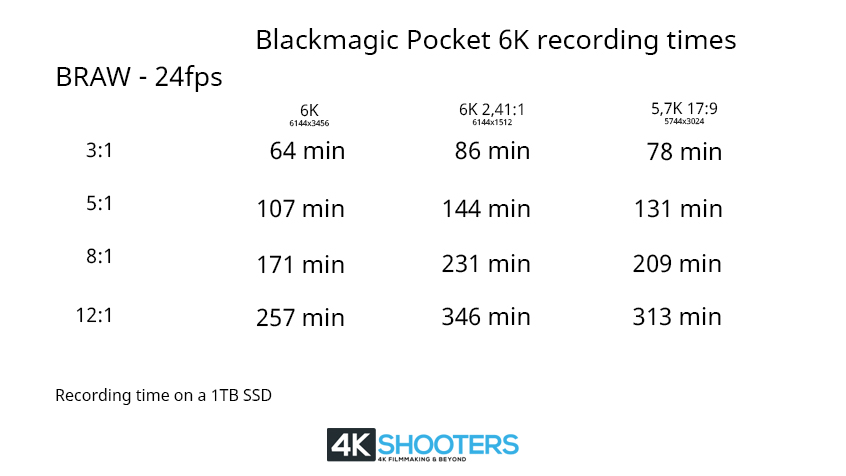
I was doing some research into which media to buy for my BMPCC6K and during the intense spreadsheet action something caught my attention.. How do you record Q0 in 6K at 50fps? According to my calculations in the worst case scenario (so less amount of compression which amounts to roughly 2:1 in Q0) the camera generates data in excess of 800MB/s which is way beyond the capabilities of any of the supported media, am i missing something? (not that I have any intention of recording slowmo in Q0 at 6K anytime soon, it was more of a curiosity really) ?
-
1 hour ago, Andrew Reid said:
Complete madness! ?
I just spent the weekend filming with the BMPCC6K and like many other have already said there's simply nothing that comes even closer to the IQ that camera produces for the price, nothing!
I think the other companies seriously need to step up their video game and this is definitely NOT the way to do that... ?♂️
-
Finally after 10 days or so some proper awesome footage, looove the anamorphic mode! ?
https://www.youtube.com/watch?v=52Pto5QImes
Quick question re anamorphic modes.. does anybody know why the windowed 3.7k mode on the 6K rather than a straight 6:5 crop from full (i think that would be around 4.1K)? Could it be a limitation of the sensor?
Also.. on the BMPCC4K Grant talked about a 4:3 mode, being the sensor not in a 4:3 aspect ratio like the GH5S i guess it's just gonna be a straight crop from full (so around 2.8K), does this make sense? ?
-
17 minutes ago, A_Urquhart said:
Most of my clients don't want anything over 4K. Also, if shooting 4K BRAW on the 6K camera I'm assuming there will be a sensor crop?
I might be wrong but as far as i can see in the specs on BM's website i don't see any windowed 4K mode, only ProRes (downscaled from full resolution i suppose) so if you want to shoot BRAW it looks like 4K is not an option...
-
1 minute ago, Emanuel said:
Who shoots with that Blackmagic camera interface will struggle to want to shoot with anything else... ; -)
That is very very true, absolute joy to use!
-
10 minutes ago, dslnc said:
it seems that the Off-speed frame rates aren't windowed like the P4K -
i.e. recording 1080p120 is only possible windowed with the P4KI hope the P6K uses the full sensor.
The reason why 1080p is not windowed on the P6K is because it only records that mode in ProRes (along with both 4K flavours as well) therefore it captures the full sensor and then downscales it whereas the P4K can do both, BRAW windowed or ProRes downscaled.
-
-
1 minute ago, zerocool22 said:
Main reason im thinking of upgrading my pocket 4K.
- Anamorphic modes
- No hassle with the speedbooster.The anamorphic mode is coming to the 4K as well in the next camera update ?
- zerocool22 and JordanWright
-
 2
2
-
I'm very torn about this update because on one hand I think the m4/3 mount is the most flexible option in terms of lensing plus with the different flavours of speedbosters available you can get much closer to full frame than Super35 if needed. On the other hand 6K for 4K delivery has the potential to deliver a great image and will probably completely solve the only issue I have with the camera which is the presence of aliasing/moirè in highly detailed scenes. (it's got substantially better with BRAW but it's still there unfortunately).
Decisions, decisions! ?
-
Magnificent still camera (and as a timelapse photographer I can only be jubilant!)
Unfortunately it's official that video specs are unchanged from the a7rIII (apart from the inclusion of eye tracking AF which is nice)
I guess we'll have to keep waiting for the new A7S then ?
https://www.sony.co.uk/electronics/interchangeable-lens-cameras/ilce-7rm4/specifications
-
@majoraxis you're very welcome and yes, hopefully it'll be soon! ?
Hmm.. they showed us some farly detailed technical slides but i don't recall hearing anything about an increase in dynamic range, sorry!



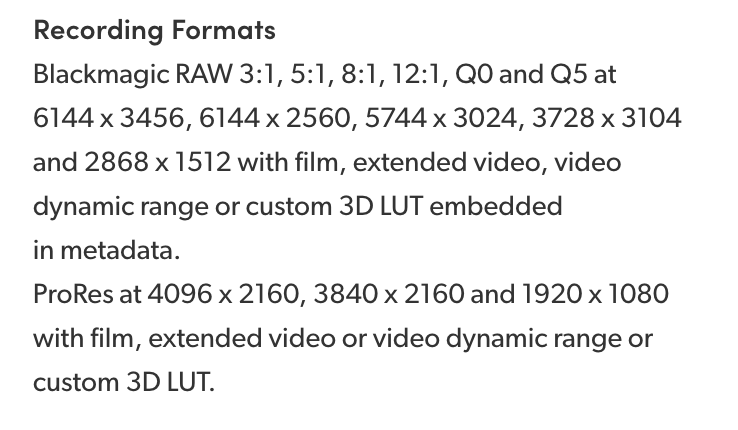
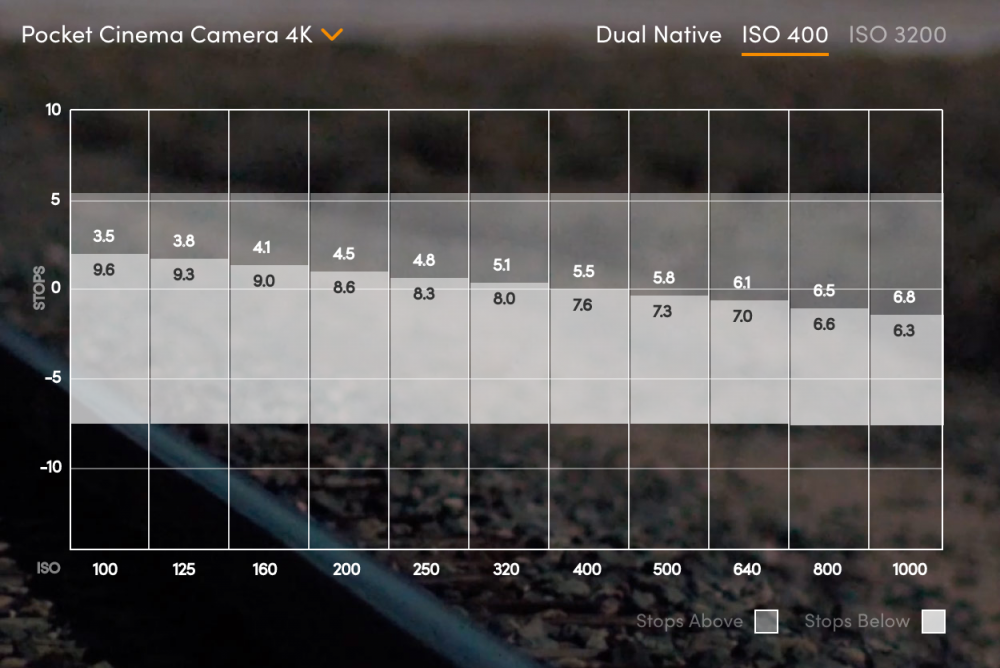
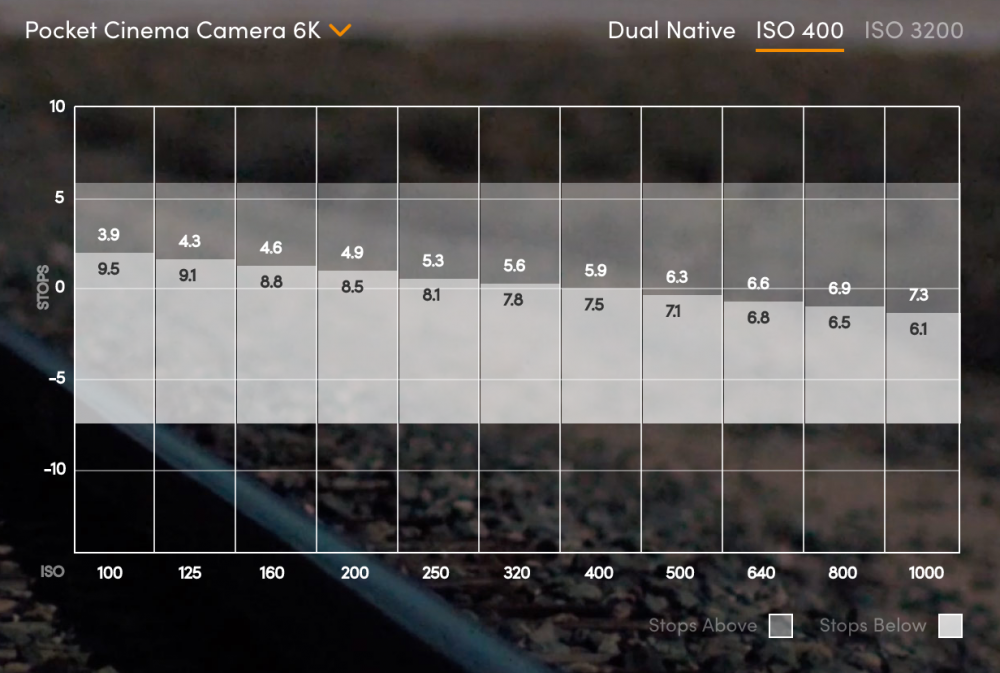
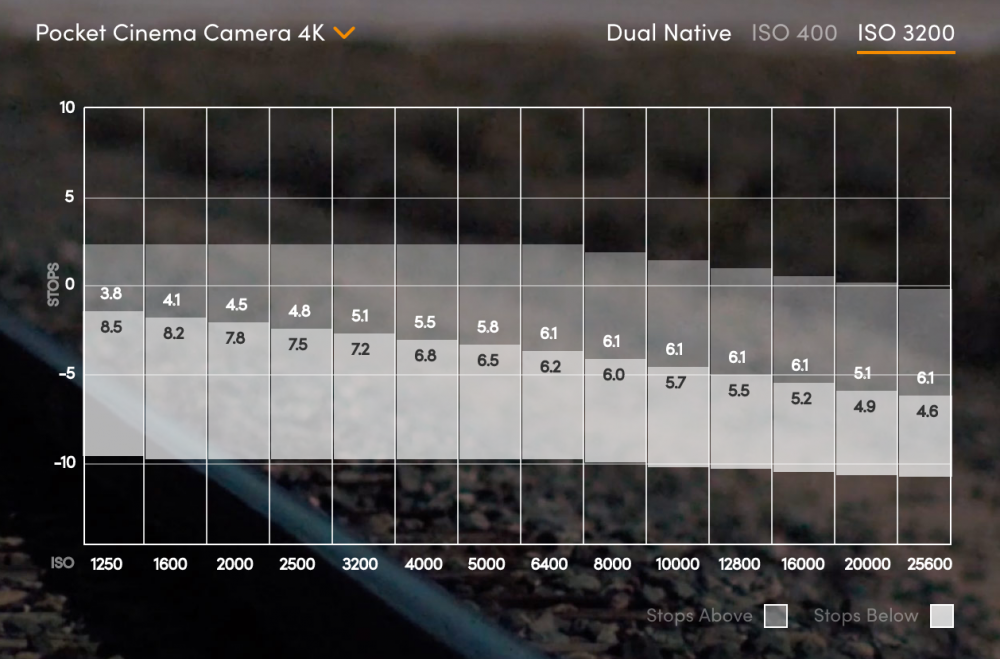
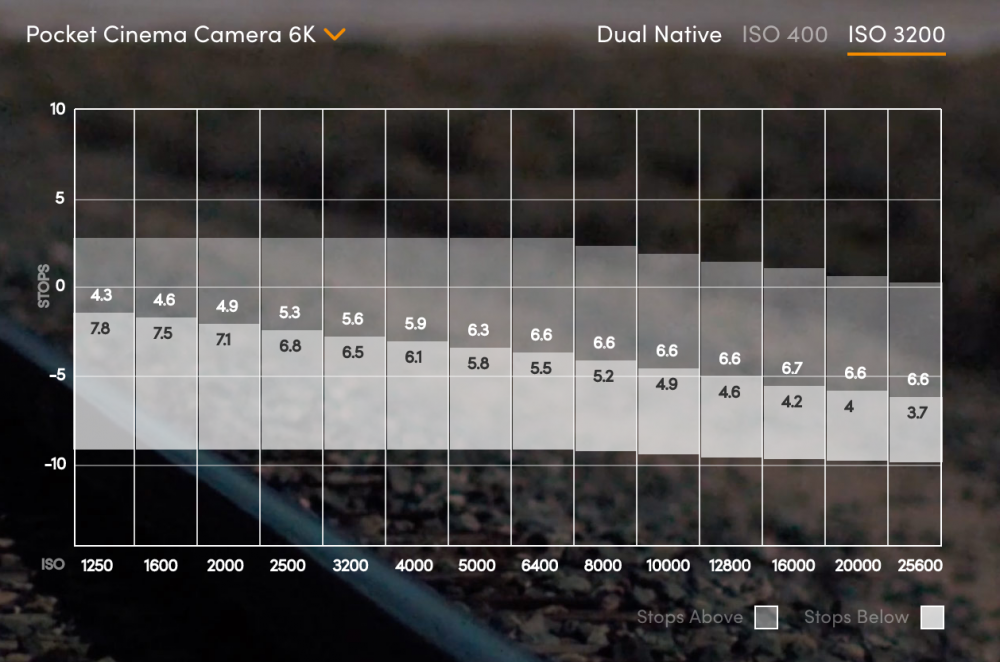
Panasonic S5 II (What does Panasonic have up their sleeve?)
In: Cameras
Posted
I was talking specifically about film emulation for stills not video, like the ones you can find in Fuji cameras